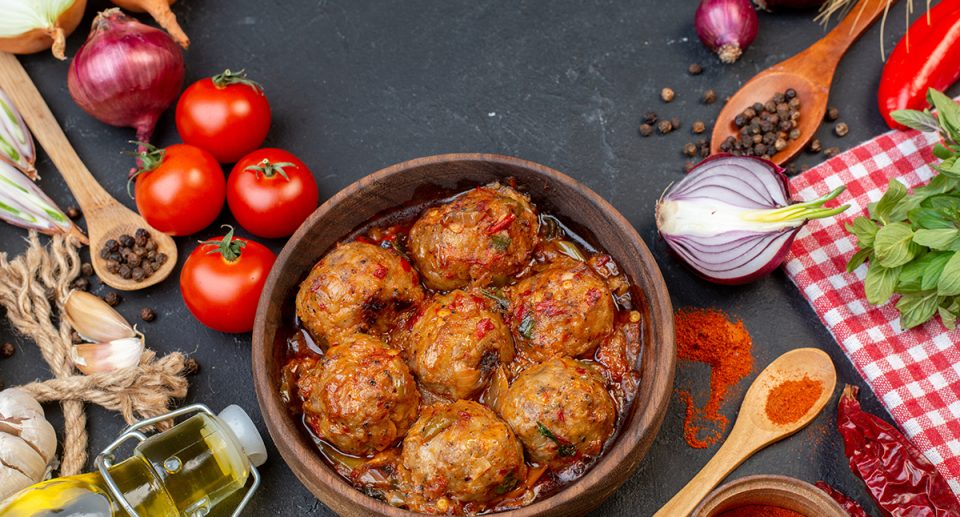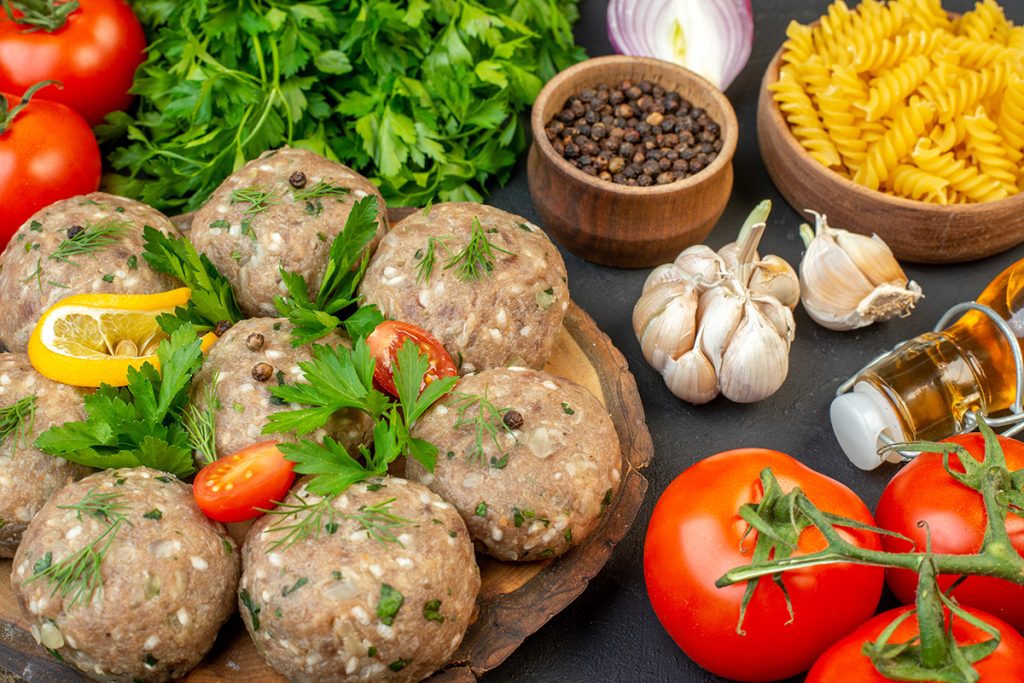5 Tips for crafting perfect meatballs

Meatballs are not only eagerly anticipated by all, but they also seamlessly complement a wide array of meals. Whether nestled in soups, draped over pasta, or added to a crisp green salad, meatballs effortlessly enhance any dish. However, the specter of a poorly executed meatball looms large.
To ensure your upcoming dinners are not marred by subpar meatballs, we present our 5 top tips for crafting tender and juicy meatballs consistently.
01. Surely use bread crumbs
Meatballs containing bread crumbs in their mixture often end up being dense and rubbery, a culinary travesty not to be taken lightly. However, don’t dismiss the inclusion of bread crumbs as mere culinary folklore; they serve a crucial purpose in maintaining the desired texture.
During the cooking process, all animal proteins—whether from eggs or muscle tissue—undergo a denaturing process. This involves the tightening of protein strands, expelling water and resulting in a firmer texture.

This phenomenon is commonly observed when meat in a pan shrinks during cooking. Meatballs undergo a similar transformation, and without a substance to disrupt these protein strands, they become overly tight and rubbery.
Fortunately, a small amount of breadcrumbs (or even crushed graham crackers) combined with a bit of liquid can work wonders in breaking up these tight protein connections. When you sink your teeth into the meatball, the starchy pockets provide easily discernible breaking points, imparting a perceived tenderness to your palate.
02. Feel free to be generous with the seasoning!
We advise ramping up the seasoning for meatballs, particularly when making large batches, compared to seasoning whole cuts of meat. Unlike steak, where seasoning primarily sits on the surface, seasoning in meatballs is meant to permeate throughout the meat. Thus, what may initially seem like an excessive amount of flavor will actually disperse throughout a considerable portion of the meat mixture.
If you’re uncertain about the seasoning, consider setting up a frying pan nearby as you season the mixture. Cook a small patty (about the size of a quarter) and taste it. This extra step may add a few minutes to your preparation time, but it ensures that you can fine-tune the flavor to perfection. Ultimately, this approach guarantees a deliciously seasoned meatball every time.

03. Don’t cut corners when it comes to fat
When crafting meatballs, regardless of whether you’re using beef, pork, chicken, or plant-based alternatives, it’s crucial to consider the fat content. Fat plays a pivotal role in imparting the juicy, flavorful essence that defines a delectable meatball.
For meats like beef, pork, turkey, or a blend thereof, opt for packages labeled with a minimum of 7% fat content. However, if you find yourself with lean meats or prefer poultry over beef, don’t fret; you can easily supplement the fat content.
Simply grab a box grater with large holes and grate a few tablespoons of cold butter directly into your mixture. This addition ensures that your meatballs maintain the desired moisture and richness, resulting in a truly indulgent culinary experience.

04. Handle your meatballs with care
Once you’ve gathered all the necessary ingredients in your bowl, it’s time to bring everything together. While your initial inclination might be to grab a spoon, pause for a moment—and then don a food-safe glove. It’s best to mix everything by hand.
Achieving tender meatballs hinges on every step of the process, including mixing and shaping. You’ve taken care to incorporate breadcrumbs for delicate structure and enough fat to prevent dryness; the last thing you want to do is overwork the mixture.
Over-mixing will compact the protein and diminish those perfect pockets of breadcrumb and fat you’ve meticulously added, resulting in meatballs that veer into rubbery territory.
This risk is heightened when using a spoon. Instead, use your hands to gently break up the meat and delicately blend the ingredients with your fingers. Approach shaping the meatballs with a similarly light touch.

05. Divide the meat into equal portions
It’s not just about delicately shaping the meatballs to prevent them from becoming dense; it’s also crucial to divide the meat mixture into equal sizes. Maintaining consistency in size ensures that all the meatballs cook evenly. If you have a mix of large and small meatballs cooking together, the smaller ones may dry out while the larger ones cook through, especially when baking in the oven.
There are two simple methods to achieve uniform-sized meatballs. Our preferred technique involves using an ice cream scoop because it’s efficient and allows you to gauge if you’re filling the scoop too much. Be mindful not to pack the meat tightly when scooping.
If you don’t have an ice cream scoop or it’s not the right size for your needs, here’s an alternative method. You won’t need any fancy tools, and it ensures that you utilize every last bit of the meatball mixture. With these strategies in mind, you’re well on your way to creating a meal featuring consistently sized, high-quality meatballs.



















